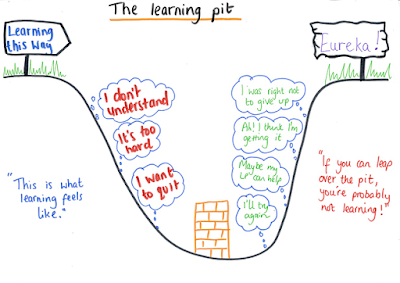The process of grading is convoluted and fraught with errors and at times arbitrary decisions. Just think about the inherent disaster of points systems. Many grades are determined using an accumulation of points over a set amount of time including homework (just checked for completeness), extra-credit, meeting (or failing to meet) behavioral expectations, participation, or a loss of points for late assignments. The last example illustrates how many grades are nowhere close to indicating what a student has actually learned. The issues with grading are not new. After an analysis of several research studies, Alfie Kohn (2011) concluded the following:
- Grades tend to diminish students’ interest in whatever they’re learning.
- Grades create a preference for the easiest possible task.
- Grades tend to reduce the quality of students’ thinking.
What is the hard truth about traditional grades and how they are currently used? In this day and age I think grades are more for parents and schools than they are for the students we are trying to serve. Learning is not only a messy process, but it the path also varies greatly from student to student. All kids learn differently and possess different and unique abilities to show us that they understand concepts. Makerspace work and projects that students engage in are a great example of this point. Students do to learn through trial and error, failure, collaboration, cross-disciplinary connections, taking risks, and overcoming certain fears that grades bring about. The ultimate reward is making something that does something and in many cases this is a workable solution to a problem they identified.
I think we are a long way off from abolishing all grades. That doesn’t mean we can’t critically reflect on the role grades play and how they are calculated. If the true goal of schools is learning then that should be reflected somehow in a grade. We must begin by developing better formative and summative assessments that move away from students telling us what they know and instead show us that they understand. A mindset shift is also needed where students work and think in ways that allow them to experience the inherent rewards of entering and exiting the learning pit. This is Quad D learning at its finest.

You need to be a member of School Leadership 2.0 to add comments!
Join School Leadership 2.0